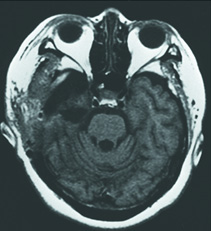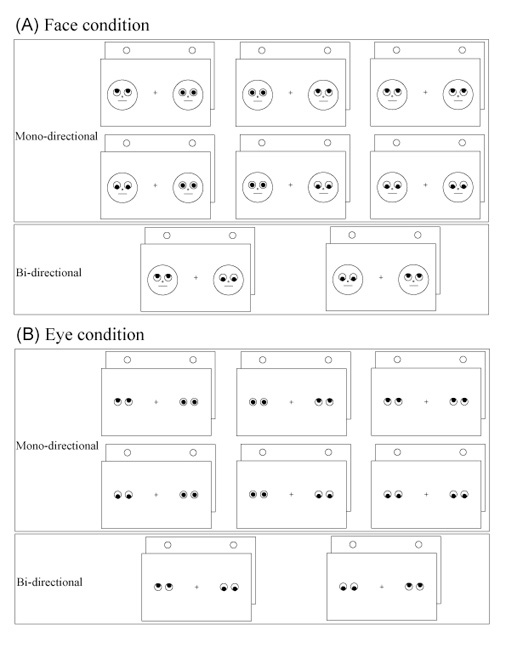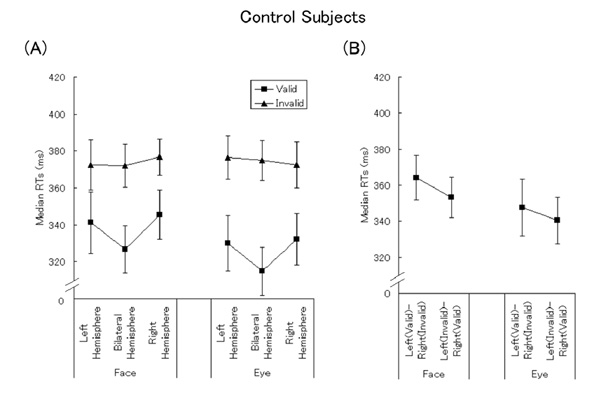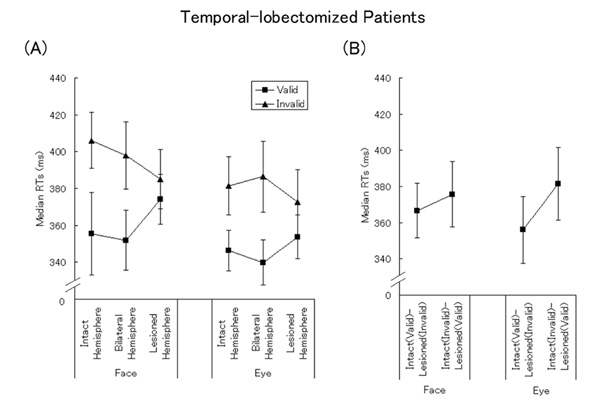SATO Wataru Laboratory
Involvement of medial temporal structures in reflexive attentional shift by gaze
(Okada, T., Sato, W., Kubota, Y., Usui, K., Inoue, Y., Murai, T., Hayashi, T., & Toichi, M.: Soc Cogn Affect Neurosci)
Recent studies have revealed that eye gaze triggers reflexive shift of the observer”Ēs visuospatial attention to its direction even if it does not predict any events in the environment. To determine whether medial temporal structures are involved in this reflexive gaze processing, an experiment of the gaze-cuing paradigm was carried out in seven epileptic patients who had undergone unilateral temporal lobectomy and nine age- and IQ-matched epileptic controls who had not undergone any surgical treatments.

Gaze cues were presented for 200 ms to the unilateral visual field, after which subjects were required to localize targets as quickly as possible. They were also instructed that gaze directions were not predictive of the location of the targets.

When the gaze cues stimulated the intact hemisphere in lobectomized patients or either hemisphere in controls, reaction times for correct responses were significantly shorter when gaze directions were toward the targets than away from the targets. This cuing effect was not manifested following stimulation of the lesioned hemisphere in lobectomized patients.


These findings suggest that the medial temporal structures, including the amygdala, play a crucial role in the reflexive shift of attention triggered by another person”Ēs gaze direction in humans.
Return to
Recent Research.
Return to
Main Menu.



